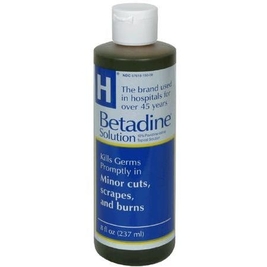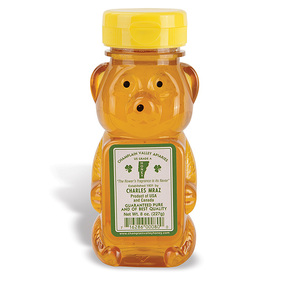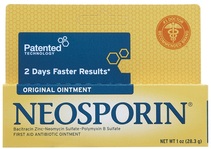Skin InjuriesCuts, Scratches and Abrasions |
Cuts, scratches and abrasions and how to handle them.
|
What are Cuts, Scratches and Abrasions?
While it may seem pretty simple, there are actually some important differences between cuts, scratches and abrasions. It is important to understand what each one is and how it differs from the others. Treatment will depend on which type of injury your rabbit has.
Abrasions are areas where skin has been scraped or worn down. Abrasions are usually caused by rubbing or friction (rug burn, for example). Typically, only the surface of the skin has been damaged. Knees and elbows are particularly susceptible to abrasions. Abrasions may or may not cause bleeding.
Why Cuts and Your Disabled Rabbit?
As with any rabbit, disabled rabbits are prone to little cuts and scratches now and again. Unfortunately, disabled rabbits may be a bit more susceptible to them as they are often more clumsy than other rabbits when it comes to movement. For instance, a rabbit with head tilt may have trouble moving around objects and may scratch themselves, a blind rabbit may have trouble navigating furniture (like table legs) and may cut themselves, and paralyzed and splay leg rabbits may be susceptible to abrasions from carpets or objects because their bodies are closer to the ground. In case your disabled rabbit sustains a minor injury, it is important to be able to identify and begin to treat those injuries at home.
How Do You Treat Cuts, Scratches and Abrasions?
Cuts
- Apply immediate and direct pressure to the wound to stem bleeding.
- Cover the wound with a sterile dressing, such as gauze, and continue to apply direct pressure. If bleeding continues, apply another layer of gauze. Do not remove the first layer. Rather, add the second on top of it. Apply consistent and constant pressure. If the bleeding does not stop, consult a veterinarian immediately.
- Once bleeding stems, rinse out the wound with clear, warm water. Use an antiseptic such as Betadine to fight germs and infection.
- Dry the wound area by dabbing lightly with a clean, sterile gauze or cotton cloth.
- Apply a thin layer of antibiotic. We recommend Neosporin Original. This does not help the cut to heal faster, but does discourage infection and promote natural healing in more open or deep cuts. If the cut is very minor, an antibiotic may not be necessary as the wound will heal quickly enough to make infection unlikely. In these cases, you can also use a small dab of honey on the wound to seal it from outside debris and initiate the natural healing process. Honey is even said to draw out bacteria and toxins.
- Cover the wound if the cut is open, especially if the rabbit may lick or aggravate the area. You can do this with gauze and fabric tape. This will help to keep the wound clean and keep harmful bacteria out. Once the wound has healed enough to make infection unlikely, remove any bandaging. Fresh air will speed healing.
Scratches
- Check the wound. Notice the extent of the damage to the skin, the level of redness and irritation.
- Be sure the wound is free of any debris. If you notice any dirt, fiber, etc., clean the wound with a clean, soft cloth or gauze. If debris remains, soak a soft washcloth in warm water and clean the area.
Abrasions
- Check for any bleeding. If there is bleeding, apply pressure to the wound to stem the bleeding.
- Clean the wound with a clean, soft cloth or gauze.
- Rinse the wound area with clear, warm water. Use an antiseptic such as Betadine to fight germs and infection.
- Dry the wound area by dabbing lightly with a clean, sterile gauze or cotton cloth.
- Apply a thin layer of skin soothant, such as A&D Original Ointment (zinc free).
Most cuts, scratches and abrasions will heal on their own with time. Scratches tend to heal most quickly, followed by abrasions and then cuts. As the skin begins to heal, a scab will form. Scabs help protect the wound from dirt and germs while new skin forms underneath. Once a scab has formed, no further bandaging is typically needed.
No matter the type of injury, be observant of signs of infection. These include:
- Redness
- Swelling
- Warmth around the wound
- Signs of pain
- Drainage from the wound
- Increase in your rabbit's temperature
Prevent infection by applying an antibiotic (such as Neosporin Original) to the wound before dressing with new bandages. If you do notice signs of infection, bring your rabbit to a vet immediately for antibiotics and further care.
How Do You Prevent Cuts, Scratches and Abrasions?
The best way to prevent injuries is to give your disabled rabbit as safe an environment as possible. In their enclosures, avoid toys with any sharp edges or houses or furniture with sharp edges. Line their x-pen with crib liners or rolled up towels to protect their legs from the bars. Be sure there isn't anything they can get stuck on and keep an eye out for anything they can cut or scratch themselves on. Before you let them out for play time, double-check the area for anything that could potentially cause injuries. When they are out for play time, monitor them at all times. Being aware of their environment, both inside their enclosure and in any play areas they may have access to, and trying to the areas as soft and safe it as soft and safe as possible will really help to minimize injuries.
Also, be sure to check your rabbit often for any sign of injury.
Also, be sure to check your rabbit often for any sign of injury.
*Please note that this section refers to minor cuts, scratches and abrasions of the skin. Any serious injuries need to be treated by a qualified veterinarian, including injuries to the eyes, nose, inner ears or genitals. Carefully assess each injury and remember- better safe than sorry.






